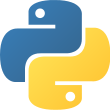 Language
Language
- Python 3
 Reading time
Reading time
- Approximately 36 days
 What you will learn
What you will learn
- Machine Learning and AI
- Audio and Music
 Author
Author
- Alexandre DuBreuil
 Published
Published
- 5 years, 11 months ago
 Packages you will be introduced to
Packages you will be introduced to
- tensorflow
- magenta
Design and use machine learning models for music generation using Magenta and make them interact with existing music creation tools
Key Features
- Learn how machine learning, deep learning, and reinforcement learning are used in music generation
- Generate new content by manipulating the source data using Magenta utilities, and train machine learning models with it
- Explore various Magenta projects such as Magenta Studio, MusicVAE, and NSynth
Book Description
The importance of machine learning (ML) in art is growing at a rapid pace due to recent advancements in the field, and Magenta is at the forefront of this innovation. With this book, you'll follow a hands-on approach to using ML models for music generation, learning how to integrate them into an existing music production workflow. Complete with practical examples and explanations of the theoretical background required to understand the underlying technologies, this book is the perfect starting point to begin exploring music generation.
The book will help you learn how to use the models in Magenta for generating percussion sequences, monophonic and polyphonic melodies in MIDI, and instrument sounds in raw audio. Through practical examples and in-depth explanations, you'll understand ML models such as RNNs, VAEs, and GANs. Using this knowledge, you'll create and train your own models for advanced music generation use cases, along with preparing new datasets. Finally, you'll get to grips with integrating Magenta with other technologies, such as digital audio workstations (DAWs), and using Magenta.js to distribute music generation apps in the browser.
By the end of this book, you'll be well-versed with Magenta and have developed the skills you need to use ML models for music generation in your own style.
What you will learn
- Use RNN models in Magenta to generate MIDI percussion, and monophonic and polyphonic sequences
- Use WaveNet and GAN models to generate instrument notes in the form of raw audio
- Employ Variational Autoencoder models like MusicVAE and GrooVAE to sample, interpolate, and humanize existing sequences
- Prepare and create your dataset on specific styles and instruments
- Train your network on your personal datasets and fix problems when training networks
- Apply MIDI to synchronize Magenta with existing music production tools like DAWs
Who this book is for
This book is for technically inclined artists and musically inclined computer scientists. Readers who want to get hands-on with building generative music applications that use deep learning will also find this book useful. Although prior musical or technical competence is not required, basic knowledge of the Python programming language is assumed.
